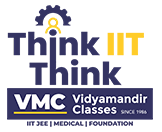Empowering Education: 10 Reasons Why Technology in the Classroom is Essential
 Posted On
Posted On
289 total views, 1 views today
In today’s digital age, technology has become an integral part of our daily lives, transforming how we communicate, work, and learn. The education sector has not been immune to this transformation, and classrooms worldwide are adopting various technological tools to enhance the learning experience. While the integration of technology in education has its challenges, the benefits far outweigh the drawbacks. In this blog, we will explore ten compelling reasons why students need technology in the classroom, along with the challenges that come with its implementation and viable solutions.

Enhancing Engagement and Interest
One of the primary challenges educators face is capturing students’ attention and keeping them engaged throughout the learning process. Technology offers interactive and multimedia-rich content, making lessons more stimulating and engaging. Through videos, virtual reality experiences, interactive quizzes, and educational games, students can immerse themselves in the subject matter, leading to improved focus and interest.
Solution: Educators must receive proper training on integrating technology effectively into the curriculum. By designing interactive and relevant activities, teachers can create an engaging learning environment that motivates students to participate actively.
Personalized Learning Opportunities
Each student is different in their learning styles, aptitudes, and weaknesses. Technology allows educators to tailor lessons to individual needs, providing personalized learning experiences. With adaptive learning software, students can progress at their own pace, receiving targeted support where required, leading to better learning outcomes.
Solution: Schools should invest in modern learning management systems and educational software that offer adaptive features. Additionally, teachers can use data analytics to identify struggling students and provide personalized assistance accordingly.
Access to a Vast Repository of Information
The internet serves as an expansive treasure trove of knowledge. Incorporating technology in the classroom allows students to access a wealth of information instantly. They can conduct research, explore diverse perspectives, and broaden their horizons beyond traditional textbooks.
Solution: Teachers must emphasize critical thinking and digital literacy skills. By teaching students how to evaluate online sources and discern reliable information from unreliable ones, they can become responsible digital citizens.
Fostering Collaborative Learning
Technology enables seamless collaboration among students, breaking down physical barriers and encouraging teamwork. Virtual classrooms, online discussion forums, and collaborative tools facilitate communication and idea sharing, promoting a sense of community among students.
Solution: Teachers can introduce collaborative projects and group activities that leverage technology. This not only enhances students’ teamwork abilities but also prepares them for the collaborative nature of the modern workplace.
Real-World Simulations and Experiments
Certain subjects, like science and mathematics, often require hands-on experiences for better comprehension. Virtual simulations and online laboratories offer a safe and cost-effective alternative to conducting complex experiments in a physical setting. Students can interact with simulations, conduct experiments, and visualize abstract concepts effectively.
Solution: Schools should invest in high-quality virtual labs and simulations that align with the curriculum. Educators can guide students through these experiences, ensuring they understand the concepts being explored.
Increased Access to Remote Education
Technology has revolutionized the concept of distance learning, making education accessible to students who may have otherwise faced geographical constraints. Online classes and remote education opportunities enable students to pursue courses offered by prestigious institutions worldwide.
Solution: Schools should provide the necessary infrastructure and training for both students and teachers to embrace remote learning effectively. This includes ensuring access to high-speed internet and offering professional development opportunities for educators.
Improved Organizational Skills
Digital tools, such as online calendars, task management apps, and note-taking software, can help students stay organized and manage their time efficiently. By learning to use these tools effectively, students develop essential life skills that are valuable beyond the classroom.
Solution: Incorporate digital organizational tools as part of the curriculum and educate students on their effective use. Teachers can demonstrate how technology can be leveraged to enhance productivity and time management.
Instant Feedback and Assessment
Traditional assessment methods often require substantial time to provide feedback to students. Technology streamlines this process by offering instant feedback on quizzes, assignments, and tests. Students receive immediate insights into their performance, enabling them to identify areas for improvement promptly.
Solution: Schools should invest in online assessment platforms that can provide immediate feedback. Teachers should use this feedback to tailor their instruction and address the specific needs of each student.
Enhanced Creativity and Expression
Technology opens up a world of creative possibilities for students to express themselves. Digital tools like video editing software, graphic design applications, and multimedia presentations enable students to showcase their understanding of the subject matter in innovative and imaginative ways.
Solution: Encourage creativity in the classroom by introducing projects that allow students to use technology to express themselves. Providing them with the freedom to choose their preferred mode of presentation can foster a sense of ownership over their learning.
Bridging the Digital Divide
While technology can offer numerous advantages, it’s essential to acknowledge the existing digital divide. Not all students have equal access to devices and the internet, leading to disparities in learning opportunities.
Solution: To bridge this gap, schools can implement technology lending programs, where students can borrow devices and access resources. Additionally, partnerships with community organizations and government initiatives can help secure internet connectivity for underprivileged students.
Final Thoughts
In conclusion, the integration of technology in the classroom presents immense opportunities to enhance the learning experience for students. From increased engagement and personalized learning to fostering creativity and collaboration, technology empowers educators to cultivate a generation of tech-savvy, adaptable, and informed individuals.
While challenges like accessibility and proper training exist, they are not insurmountable. With the right strategies, schools can overcome these hurdles and create a technology-driven learning environment that prepares students for success in an ever-evolving world.
As we continue to embrace the digital era, it’s crucial for educational institutions and policymakers to prioritize technology integration and equip students with the necessary skills to thrive in the 21st century and beyond.



